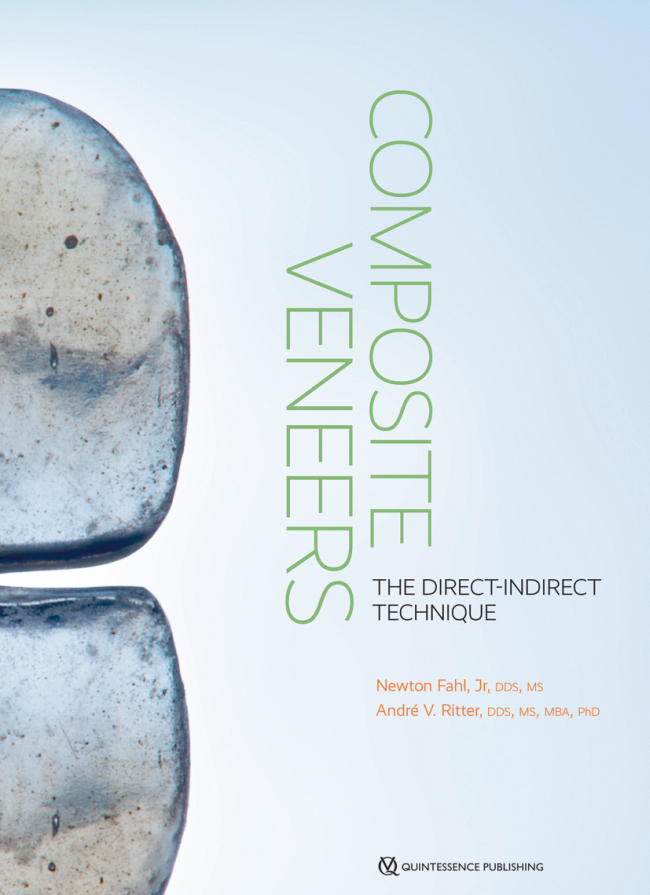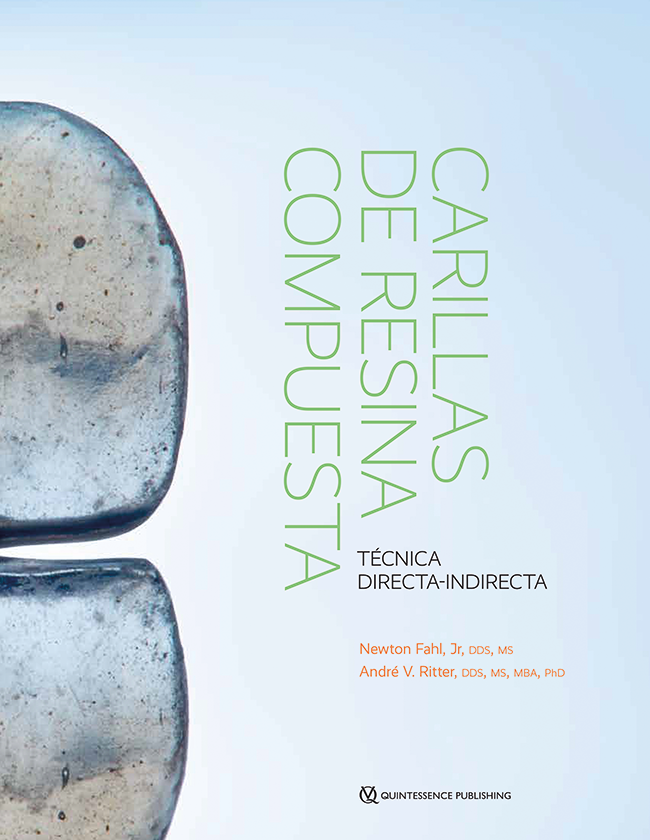The Journal of Adhesive Dentistry, 3/2012
DOI: 10.3290/j.jad.a22423, PubMed-ID: 22282746Seiten: 229-234, Sprache: EnglischOliveira, Greice C. B. / Oliveira, Gustavo M. S. / Ritter, André V. / Heymann, Harald O. / Swift jr., Edward J. / Yamauchi, MitsuoPurpose: 1. To evaluate the effect of tooth age on the microtensile bond strengths (µTBS) of various adhesive systems to dentin; 2. To evaluate the effect of different etching times on the microtensile bond strengths of different adhesive systems to young vs mature dentin.
Materials and Methods: One hundred twenty intact human teeth were mechanically ground to expose midcoronal dentin and were randomly assigned to three groups (n = 40) according to subjects' age in years: 15 to 25, 35 to 45, and >= 55. Within each group, specimens were further randomized into 8 subgroups according to adhesive (etch-and-rinse 3- and 2-step; self-etching 2- and 1-step) and etching time (manufacturer instructions vs extended). Resin composite was applied to the treated surfaces, and after 24 h, all specimens were processed for microtensile bond strength testing. Data were analyzed by factorial ANOVA and Tukey's test (p = 0.05).
Results: µTBS values ranged from 10.9 MPa (2-step self-etching, extended etching time, age group 15 to 25) to 50.7 MPa (1-step self-etching, extended etching time, age group >= 55). With only one exception, tooth age and etching time had no significant effect on the bond strengths of the adhesives to dentin. The 2-step self-etching system had lower bond strengths than the other systems, regardless of etching time or tooth age.
Conclusion: Tooth age and etching time did not affect the dentin bond strengths of the adhesives tested.
Schlagwörter: dentin bonding, dentin age, adhesive application time, etching time, microtensile test
Quintessence International, 8/2006
PubMed-ID: 16922020Seiten: 613-619, Sprache: EnglischFaye, Babacar / Kane, Abdoul Wahab / Sarr, Mouhamed / Lo, Cheikh / Ritter, Andre V. / Grippo, John O.Objective: The purpose of this preliminary investigation was to examine the presence of noncarious cervical lesions (NCCLs) among a convenience sample of non-toothbrushing subjects with Hansen's disease (leprosy).
Method and Materials: A cross-sectional sample of 102 non-toothbrushing subjects (20 to 77 years of age) was examined. The clinical parameter of interest for this study was the presence or absence of NCCLs and their probable etiology as it relates to the subjects' diet, occlusion, and use of medication. Subjects were examined clinically and interviewed according to study protocol.
Results: NCCLs were found in 48 subjects (47% of the studied sample). Widespread consumption of acidic foods and beverages acting as corrodents, signs of parafunction, and use of medication that causes xerostomia were also noted. Thus, all may be contributing factors in the etiology of NCCLs in this population.
Conclusion: This preliminary report suggests that toothbrush/dentifrice abrasion was not a factor in the etiology of NCCLs in the population studied. The authors intend to expand their study among these non-toothbrushing subjects.
Schlagwörter: abfraction, corrodent, corrosion, friction, mechanisms, noncarious cervical lesion, schema, stress
The Journal of Adhesive Dentistry, 2/2005
DOI: 10.3290/j.jad.a10288Seiten: 159-164, Sprache: EnglischTeixeira, Erica C. / Bayne, Stephen C. / Thompson, Jeffrey Y. / Ritter, Andre V. / Swift jr., Edward J.Repair of worn, broken or discolored composite restorations can be accomplished using new composite material and dentin bonding systems. The purpose of this study was to investigate the effectiveness of self-etching adhesive systems for composite re-bonding procedures onto different composite substrates that had been aged for 6 years prior to testing.
Two hundred cylinders (4 mm x 5 mm) of composite were fabricated using 4 hybrid composites [AeliteFil (Bisco), Prodigy (SDS Kerr), TPH (Dentsply Caulk), and Z100 (3M ESPE)] following manufacturers' directions and stored for 6 years in 1% NaCl solution. After aging, each specimen was wet polished through 600-grit SiC and randomly assigned to a self-etching bonding system (Adper Prompt L-Pop/Z100 [3M ESPE]; Tyrian One-Step Plus/AeliteFil [Bisco]; OptiBond Solo Plus SE/Prodigy [SDS Kerr], Xeno III/TPH [Dentsply Caulk]) or a total-etch control (Prime&Bond NT/TPH [Dentsply Caulk]) (n = 10 per group). Shear bond strengths (SBS) for repairs were evaluated after 48 h (crosshead speed = 0.5 mm/min) and were compared by two-way ANOVA (p = 0.05) with Tukey post-hoc tests.
Significant differences (p = 0.05) were detected for the main effects (substrates and bonding systems), but the interaction was not significant. SBS for bonding systems were from highest to lowest: (1) Prime&Bond NT, (2) OptiBond Solo Plus SE, (3) Adper Prompt L-Pop, (4) Xeno III, (5) Tyrian One-Step Plus. SBS of the repair systems to Z100 were significantly lower than those to the other composite substrates.
Self-etching systems can be used to repair aged composite, but the efficacy of repair of aged composite is system dependent.
Schlagwörter: self-etching, composite repair, re-bonding, bond strength
Quintessence International, 10/2000
Seiten: 735-740, Sprache: EnglischGordan, Valeria V. / Mjör, Ivar A. / Filho, Luis Carlos da Veiga / Ritter, Andre V.Objective: The purpose of this study was to evaluate the teaching program of Class I and Class II resin-based composite (RBC) restorations in Brazilian dental schools and to observe if any differences were found from similar surveys conducted in North American, European, and Japanese dental schools. Method and materials: A questionnaire containing 15 questions was distributed to 92 Brazilian dental schools, and 64 (70%) schools returned the questionnaire. The questions inquired the amount of time the curriculum dedicated to teaching of posterior RBC restorations, future expectation regarding the teaching time, limitation in extension of the occlusal width and the proximal box in Class II, contraindications for placing posterior RBC restorations, protocol for using bases and liners, brand of bonding agents and RBC used, instruments and techniques employed for finishing, cost relative to amalgam restorations, and biologic reactions related to the use of posterior RBC. The responses were calculated as percentages based on the number of schools that responded to the questionnaire. Where appropriate, the Chi-squared test and the Fisher exact test were used for statistical analysis. Results: Of the dental schools that responded, 88% dedicated 10% to 50% of the teaching time in operative dentistry to posterior RBC restorations. A significant correlation (P = 0.041) was found between the percentage of time dedicated to the teaching of posterior RBC restorations and the higher cost of posterior RBC compared to amalgam restorations. Resin-based composite restorations cost 30% to 70% more than amalgam restorations in the 40% of dental schools that charged a fee. Posterior composites for large restorations in molars were used by 14% of the dental schools. Base and liner were not placed by 10% of dental schools in deep Class I or Class II RBC restorations. One school did not recommend acid etching of the dentin. Conclusion: No major differences were found in the teaching philosophy of posterior RBC restorations by comparing the Brazilian data to the data from similar surveys done in North America, Japan, and Europe.
Quintessence International, 9/1999
Seiten: 591-599, Sprache: EnglischRibeiro, Cecília C. C. / Baratieri, Luiz Narciso / Perdigão, Jorge / Baratieri, Naira M. M. / Ritter, André V.Objective: The purpose of this project was to evaluate the performance of a dentin adhesive system on carious and noncarious primary dentin in vivo. Method and materials: Forty-eight primary molars with carious lesions were randomly assigned to 2 different treatments: group 1 (control, n = 24) - All identifiable, irreversibly infected dentin was removed prior to the application of the bonding agent and restorative material; group 2 (experimental, n = 24) - Irreversibly infected dentin was partially removed prior to the application of the bonding agent and restorative material. The control and experimental teeth were clinically monitored every 3 months and evaluated 12 months after restoration. The teeth were extracted around the time of exfoliation and processed for scanning electron microscopy. Results: Retention rate, marginal integrity, and pulpal symptoms were identical in both groups. Radiographically, the radiolucent area associated with the experimental restorations did not increase with time in 75% of the cases. For the control group, the adhesive system formed a hybrid layer. In the experimental group, there was morphologic evidence of the formation of an acid-resistant 'altered hybrid layer.' An acid-resistant tissue, resulting from the interdiffusion of adhesive resin within the area of carious dentin, was observed adjacent to and under the altered hybrid layer. Conclusion: Application of an adhesive restorative system to irreversibly infected dentin did not affect the clinical performance of the restoration.
Quintessence International, 6/1999
Seiten: 413-418, Sprache: EnglischCardoso, Mariane / Baratieri, Luiz Narciso / Ritter, André V.Objective: The purpose of this investigation was to evaluate the influence of finishing and polishing procedures on the decision to replace existing amalgam restorations. Method and materials: Twenty Class I and Class II amalgam restorations, free from obvious defects, were selected in 6 patients. The restorations were photographed before and after being submitted to a standard finishing and polishing procedure. In the first phase, the preoperative slides were examined by 27 clinicians and senior dental students, who were instructed to inspect each restoration and answer a questionnaire indicating if and why the restoration needed to be replaced. Two weeks later, the postoperative slides were presented to the same examiners, who were asked to answer the same questionnaire as before. Results: At the first phase, there were 236 decisions (44%) to replace existing amalgam restorations. Following the finishing and polishing procedures, 114 decisions (21%) were made to replace existing amalgam restorations. This difference was statistically significant. Secondary caries was the most common reason for replacement. Conclusion: The finishing and polishing procedure reversed the decision to replace old amalgam restorations.






